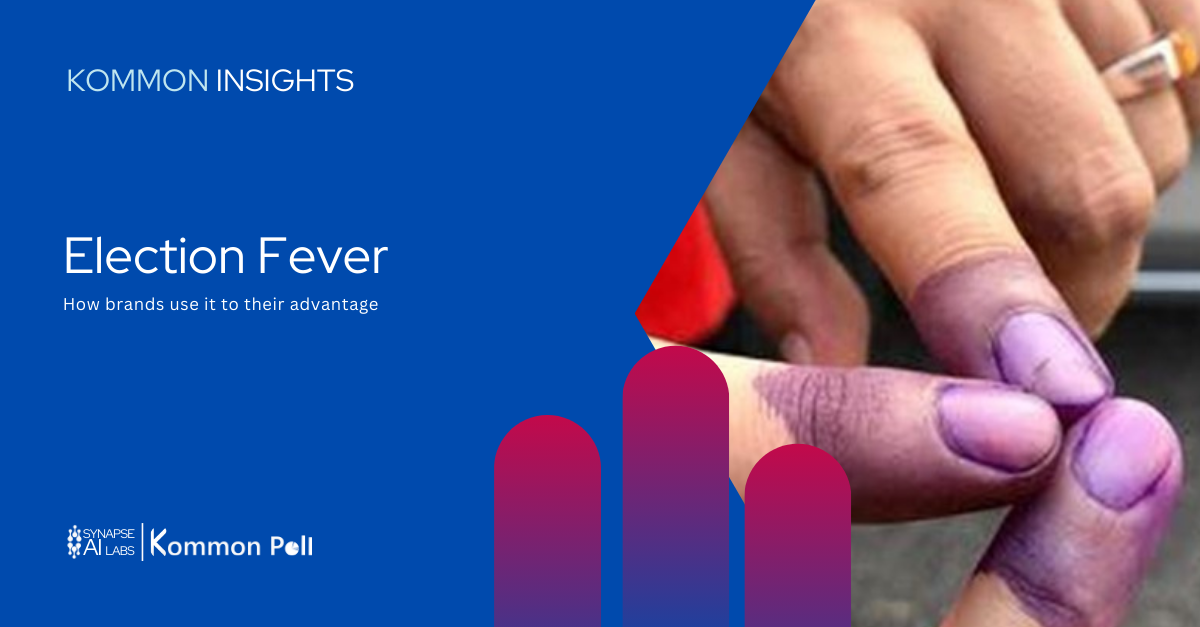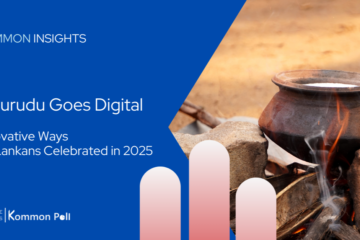Brands had a unique opportunity to engage with the public during Sri Lanka’s presidential election period by aligning their advertising strategies with the country’s sentiment. Numerous companies took advantage of the increased political discussion and used social listening to develop effective, timely advertising that connected with consumers before and after the election. While some campaigns relied on the national mood to keep their messaging up-to-date, others quietly promoted their products while encouraging voters to cast votes.
Pre-election
As the country approached the presidential election, many brands capitalized on the pre-election buzz by tailoring their campaigns around the themes of voting and choice. They cleverly aligned their messaging with the election’s focus, drawing parallels between the power of choice at the polls and selecting from their product ranges. This strategy allowed brands to stay relevant and engage with consumers while reinforcing their offerings in a timely, relatable context.


To interact with their audience and advertise their product lines, Hutch Sri Lanka and Maliban Group have skillfully capitalized on the election trend in their two Facebook postings. Both businesses make smart use of themes of choice and leadership, drawing comparisons between choosing the right product and choosing the right leader during elections. They highlight their offerings and encourage civic responsibility by urging their viewers to cast their ballots. Hutch incorporates this subject by emphasizing the importance of picking a dependable network and establishing itself as the best option for staying connected. Maliban leverages the election hype by urging customers to “make the right choice,” combining the significance of casting a conscientious ballot with the selection of high-quality snacks. By connecting their marketing to the broader election story, this strategy not only encourages civic engagement but also guarantees that both businesses remain relevant.

HNB Assurance PLC has capitalized on election themes in their marketing by promoting values like choice, leadership, and responsibility. This election season backdrop allows HNBA to stress the importance of long-term planning, linking the act of voting for a better tomorrow with choosing the right insurance. Their campaigns resonate with heightened public sentiment around decision-making, fostering civic engagement and encouraging audiences to reflect on their choices. This strategy effectively showcases HNBA’s offerings as solutions for informed decision-making, expanding their customer base and enhancing brand awareness during this crucial time.

In a similar vein, Domino’s Sri Lanka has cleverly used the election trend to promote its brand by aligning the idea of voting with making the “right choice,” much like selecting a leader. Their campaign encourages customers to vote for the right cause while offering 50% off, framing the discount as a reward for choosing Domino’s. By tying the promotion to election-themed language, they create a playful and timely connection between casting a vote and picking their pizza. This not only boosts engagement but also attracts attention with a compelling offer, encouraging customers to make informed choices both in politics and in food, while strengthening brand loyalty during a period of heightened public interest.
Post-Election
After the presidential election, several moments went viral, capturing the public’s attention. Brands quickly tapped into these trending topics, using them to create timely and relevant campaigns. By aligning their messaging with the viral content, they were able to engage audiences effectively, riding the wave of post-election buzz to boost visibility and connect with consumers in a fresh, relatable way.


Emerald International effectively capitalized on this heightened public interest by strategically aligning their marketing efforts with post-election discussions. The data from Kommon Poll clearly demonstrates a surge in brand mentions following the election, particularly after Emerald promoted their Double Pocket Active Shirts and trousers on social media. By linking their product promotions to the ongoing public discourse, Emerald successfully positioned themselves as relevant and timely, capturing the attention of a wider audience.

The increase in UGC and shares surrounding Emerald’s campaign highlights the significant engagement generated by their strategy. This surge in user-generated content reflects a strong connection with their audience and amplifies their brand visibility. Emerald’s strategic timing effectively capitalized on post-election momentum, driving interest and traffic towards their product lines. By fostering UGC and encouraging shares, they showcased a deep understanding of consumer behavior and adaptability in their marketing approach. Overall, the data illustrates how Emerald’s focus on engaging users through UGC and shares successfully enhanced brand visibility, generated positive sentiment, and positioned them as a timely and relevant brand in the post-election landscape.
Power of Social Listening
In today’s digital age, social listening has become an essential tool for brands to understand how their campaigns resonate with the public. It provides a window into consumer reactions, allowing companies to track conversations about their products, even when advertising is done through traditional channels like TV or radio. This capability offers brands valuable insights into what their audiences truly think, helping them adapt and improve their strategies in real time.

A great example of this was during the recent election results when brands like Watawala Tea and Eno ran continuous ads during televised coverage. While these ads reached a large audience, they also sparked a significant amount of frustration due to their repetitive nature. Social media quickly became a platform where viewers expressed their displeasure, with posts and comments pointing out the annoyance. As depicted in the chart within the screenshot, the spike in mentions concerning Watawala Tea and Eno on specific days could be attributed to this very frustration. The data highlights that mentions increased significantly due to discussions about the ads and the products’ usage.

Looking at the data we see how powerful social listening can be. The mention count for both social and non-social platforms offers immediate insight into the public reaction to specific brands and products. For instance, the Social Mention Count saw a significant increase of 310 mentions. This kind of fluctuation reflects real-time responses to ongoing marketing efforts, showing how brands are being talked about online. The unique authors count increase showing a growing number of individuals contributing to the conversation, emphasizing the need for real-time responses from the brands.
Social listening gives brands a competitive edge by capturing consumer feedback from both online and offline campaigns. This real-time insight enables companies to swiftly respond to audience concerns and shape future marketing efforts to better engage with their customers.
How Kommon Poll Can Help Brands with Social Listening
In an ever-changing socio-political environment, it’s crucial for brands to stay attuned to the sentiment of their audience. Kommon Poll offers advanced social listening and analytics capabilities that allow brands to track, measure, and act on audience insights in real time. With the ability to monitor shifts in conversation, brands can craft campaigns that not only speak to current concerns but also anticipate emerging trends.
By using Kommon Poll, brands can ensure their campaigns engage with their audience on a deeper level—creating authentic, timely messages that resonate and drive results. Start using Kommon Poll today and turn insights into action!




